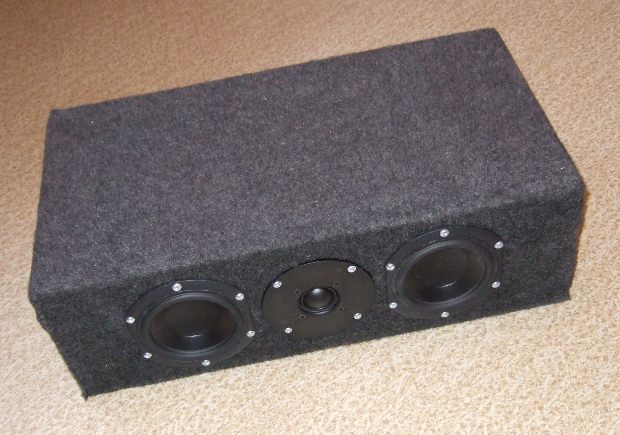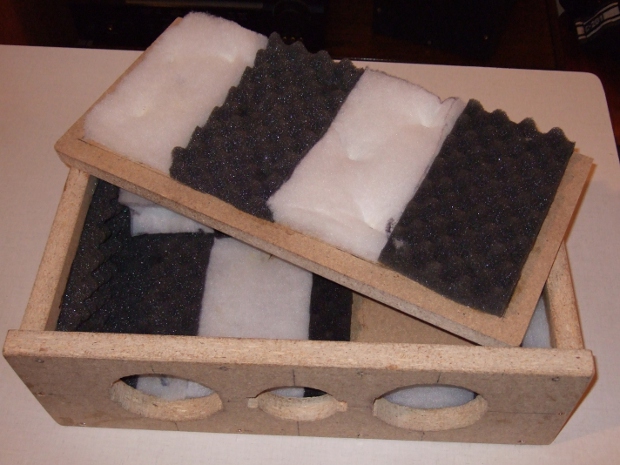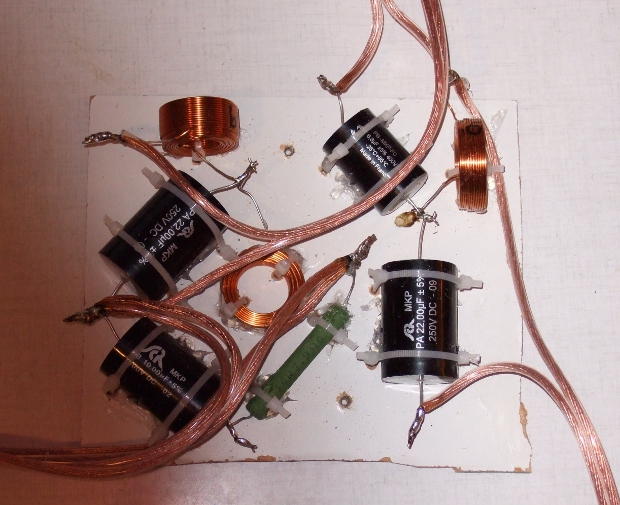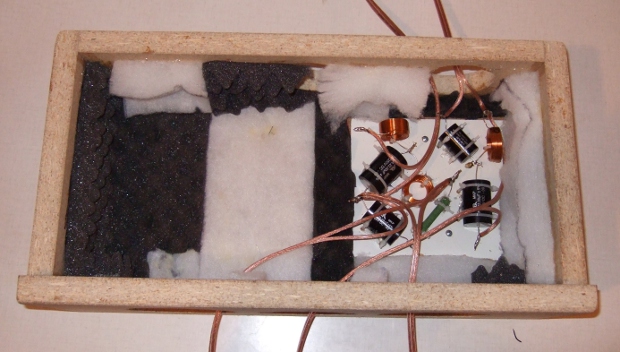Center Speaker
To complete my 5.1 loudspeaker system I designed and built a center loudspeaker. To make it easier to place the loudspeaker I designed it relativly small using two 4 inch bass-midrange elements and a tweeter. A bigger loudspeaker was not needed since my subwoofer and main front speakers can handle the low frequencies.

The loudspeaker elements⌗
I tried to find as similar elements to my other loudspeakers as possible. The tweeter was easy, I just used the same as I have used in my front and rear speakers, which is Seas H1189 27TDFC. The bass-midrange was harder since the elements used in my front and rear speakers is longer available. I decided to use Peerless HDS PPB 4 which is quite similar but smaller.
Box calculations⌗
The box volume, tuning and simulated frequency response is calculated from the formulas given in Frode Nesset's loudspeaker book. The ideal volume for the two bass elements is approximately 16l and the ideal tuning is 57Hz. To try different combinations of volume and tuning I wrote a Python script to plot the response for some selected volumes (5.0, 7.5, 10.0, 12.5, 15.0, 17.5) l with some selected tuning frequencies (30, 40, 50, 60, 70, 80) Hz. From the result it seems that 9.0l tuned to 65Hz is a good combination, which is the combination I decided to use. The frequency response for this box is plotted below.
This box is practical to design and below is the mechanical drawings for my box.
Crossover filter⌗
The crossover filter is calculated by the formulas given in Frode Nesset's loudspeaker book. No attenuation circuit was needed since the two bass-midrange elements combined have the same sensitivity as the tweeter. A simple RC-shunt impedance correction circuit is used in parallel with the two bass-midrange elements to make the impedance more constant with increasing frequency. The actual filters are made as similar to the others loudspeakers as possible in order to make it sound similar to the other loudspeakers. Therefore 3rd order filters with Butterworth characteristic and a -3dB frequency of 2500Hz is used. The frequency response was simulated in gnucap with this circuit file. Impedance models of the loudspeaker elements are used as load. Below is the schematics and plot of the frequency response. The uppermost plot is the phase response and the lowermost is the amplitude response. The red and green lines represents respectively the high and low frequency response.
Assembling⌗
The box is built with 22mm thick plates. Below are some pictures from the assembling.







